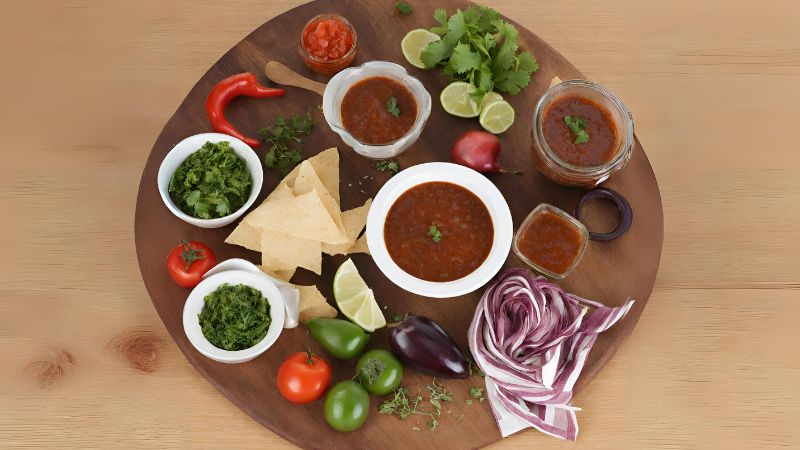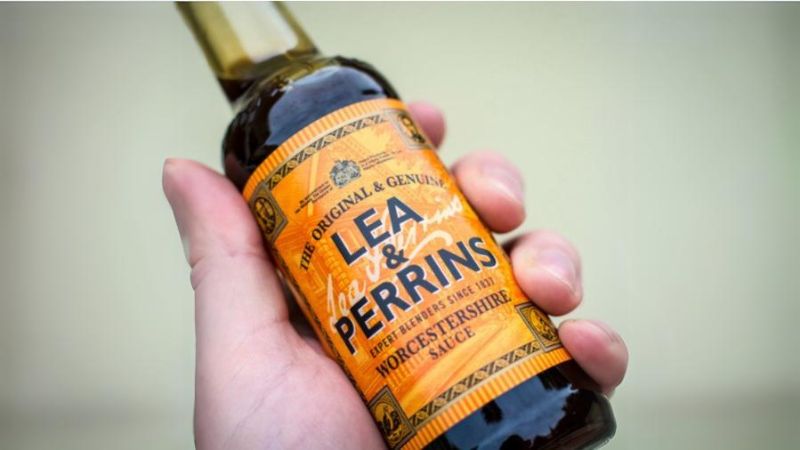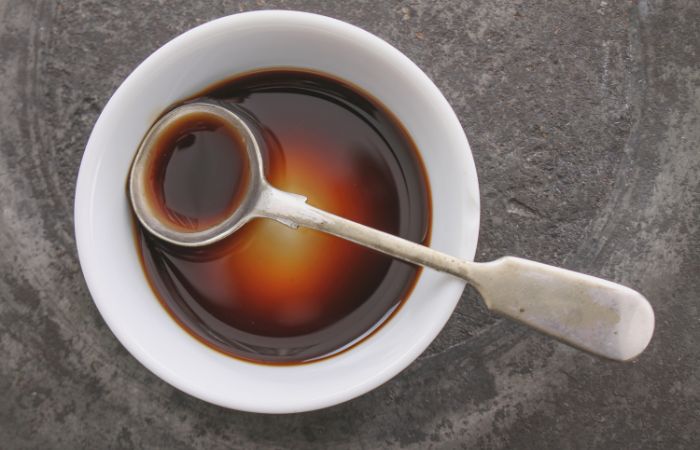Indice dei contenuti
Discover the history and secrets behind Worcestershire sauce, the classic English condiment with a mysterious recipe
Have you ever heard of Worcestershire sauce? That tongue-twisting name belongs to one of England’s most famous condiments — a bold blend of tamarind, soy, garlic, red onions, anchovies and a mix of spices that awaken every taste bud.
This sauce was born in 19th-century England, at a time when exotic flavours were a must in every refined kitchen. Two chemists from Worcester, John Wheeley Lea and William Henry Perrins, created it after being asked by a former governor of Bengal to recreate a sauce he had loved in India.
Their first attempt was awful. But as luck would have it, the forgotten mixture was left in a cellar for more than a year and transformed into something remarkable — a rich, tangy, umami-packed elixir.
By 1837, the same year Queen Victoria took the throne, Lea & Perrins Worcestershire Sauce made its grand debut. Just a few years later, it was being served aboard luxury transatlantic ships. Today, the sauce still bears the founders’ names, its 18-month-aged secret recipe travelling the world and winning hearts everywhere.
It’s a must for Caesar salads, Bloody Marys and even cheese on toast. The secret lies in that perfect balance of flavours, the deep umami that makes everyone say, “Wow, this sauce is amazing!”
What’s in Worcestershire sauce
Finding out exactly what’s inside Worcestershire sauce is a bit like trying to uncover the secret formula of Coca-Cola. Still, we know a few clues. The label lists garlic, vinegar, tamarind, a touch of chilli, sugar and molasses. Add anchovies, natural flavourings and a few secret spices, and you’ve got the famous mix.

The key flavour here is umami, a Japanese word that means “pleasantly savoury”. It’s one of the five basic tastes, alongside sweet, salty, sour and bitter. Foods like Parmesan, ripe tomatoes, mushrooms and meat broth are naturally rich in it, and Worcestershire sauce captures that same deep, satisfying flavour.
No wonder it became an instant hit. It brought a burst of life to traditional English dishes that could otherwise taste a little plain. Lea & Perrins remains the most famous brand, and while others have tried to copy it, none have quite matched the original.
How to use Worcestershire sauce
Think of Worcestershire sauce as your secret kitchen ace, the kind of ingredient that instantly lifts any dish. It works beautifully with bacon and eggs, sausages, stews, steaks and pork, and it performs miracles in marinades.
It’s also a must in the classic Bloody Mary (and its alcohol-free cousin, the Virgin Mary).
But go easy on it, this isn’t ketchup. It’s too strong to slather over fries or fish, and definitely not something to mix with sweet foods unless you’re feeling experimental. A few drops are all you need to make a big difference.
Fun facts about Worcestershire sauce
Behind every bottle of Worcestershire sauce lies a treasure trove of quirks. Did you know that the American version, sold by Kraft Heinz, looks different from the British one?
In the United States, it comes in a dark bottle wrapped in paper, a leftover tradition from when it was imported from England and needed protection during shipping.
There’s also a small recipe difference. In the US, producers use white distilled vinegar instead of malt vinegar, which is preferred in the UK and Canada.
Worcestershire sauce around the world
This famous English sauce has travelled far and wide — and picked up different names along the way.
- In Denmark, Mexico and many other countries, it’s simply known as English sauce.
- In Brazil and Portugal, it’s called molho inglês.
- Costa Rica has its own version, Salsa Lizano, created in 1920.
- In El Salvador, where it’s known as salsa inglesa or salsa Perrins, people consume more per person than anywhere else in the world.
- Germany has a milder version called Worcestersauce Dresdner Art, made with fewer anchovies.
- In the US, brands like French’s (introduced in 1941) join Lea & Perrins on the shelves.
- And in Venezuela, Worcestershire sauce is a staple in dishes such as Hallacas and Asado Negro.
- There are also fish-free versions for those who prefer it. In Thailand, a sauce called Gy-Nguang has been produced since 1917 and uses soy instead of anchovies to achieve that same umami note.
- In Japan, many Worcestershire-style sauces are vegetarian and sweeter, made from water, syrup, vinegar, apple and tomato purée.
How to pronounce it
Ever wondered how to pronounce “Worcestershire”? You’re not alone. It looks like a puzzle, but once you know the trick, it’s easy.
It’s pronounced “WOO-ster-sheer”, not “Wor-CESTER-shire.”
The double “O” sounds like the one in “good,” and several letters are skipped entirely — which is very English, isn’t it?
Not suitable for vegetarians or vegans
Here’s an important detail: traditional Worcestershire sauce contains fish, in the form of anchovies. That means it isn’t suitable for vegetarian or vegan diets.
The anchovies are key to its signature taste, providing that rich, savoury depth through fermentation.
If you follow a plant-based diet, don’t worry! There are vegan alternatives that recreate the same complexity using seaweed or soy. They might not be quite the same, but they come close enough to keep your recipes exciting.
Who owns the brand today?
Over the years, Worcestershire sauce has changed hands a few times. It began with the two English pharmacists, John Lea and William Perrins, who invented it in their Worcester kitchen in the 1830s.

Later, HP Foods took over production. Then in 2005, H.J. Heinz, part of the Groupe Danone, bought the rights and brought the sauce into its global food empire.
It’s fascinating to think that what started in a small English apothecary became a worldwide staple found in millions of kitchens.
The recipe and its variations
While the recipe has remained mostly unchanged, there are small differences between versions made in the UK and those made in America.
The US bottle lists ingredients like vinegar, molasses, high-fructose corn syrup, anchovies, water, onions, salt, garlic, tamarind concentrate, cloves, natural flavourings and chilli extract.
The British version, however, uses malt vinegar (from barley), spirit vinegar, molasses, sugar, salt, anchovies, tamarind extract, onions, garlic, spices and flavourings.
Both are unmistakably Lea & Perrins, just with subtle tweaks to suit local tastes.
The sauce that connects cultures
One of the most interesting things about Worcestershire sauce is how it reflects Britain’s historic connections with India. It’s a culinary product born from cultural exchange, blending English and Indian influences into a single bottle.
It’s a small reminder of how food can connect worlds — past and present, East and West — through taste and tradition.
How English food culture (and Worcestershire Sauce) enriches your study holiday abroad
Learning about the food traditions of a country, like the story of Worcestershire sauce, is more than just a bit of trivia. It’s a way of truly understanding its people, its history and its everyday life.
If you’re preparing for a study holiday in England, knowing these cultural details helps you connect more deeply with your surroundings. Imagine sitting at a pub table or a summer barbecue, sharing a fun fact about this sauce, it’s an easy ice-breaker and a great chance to practise your English.




